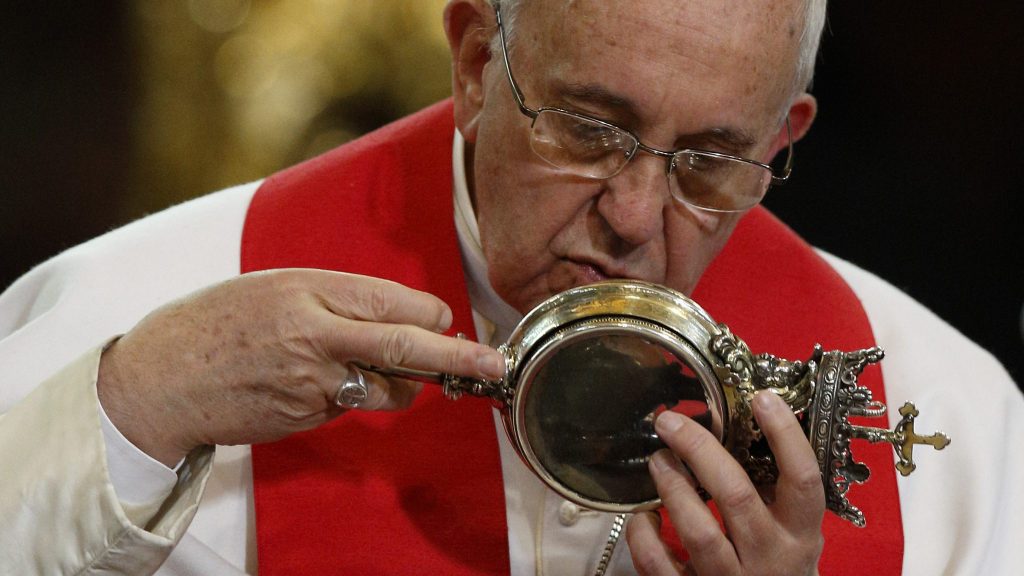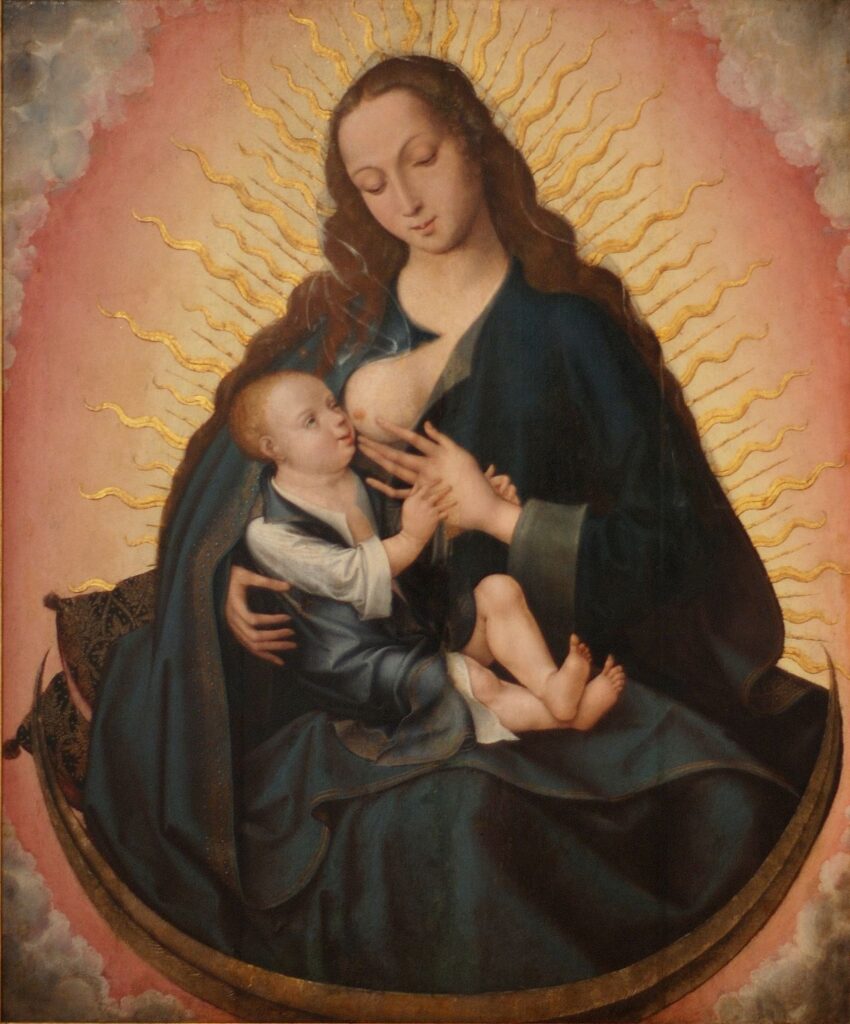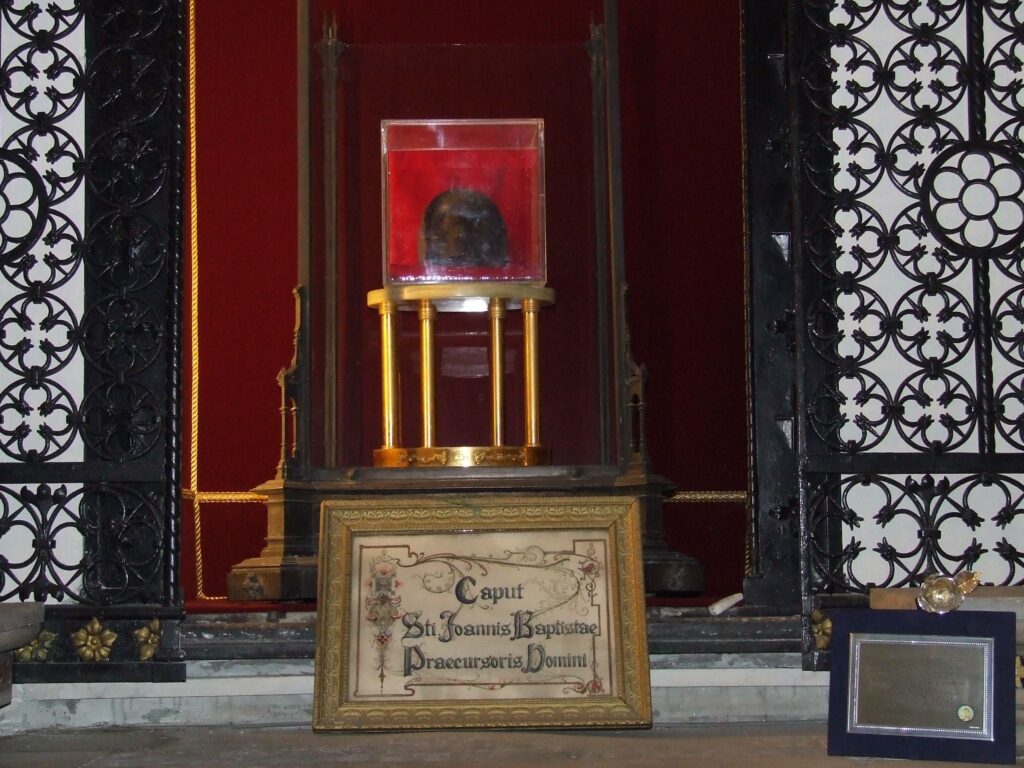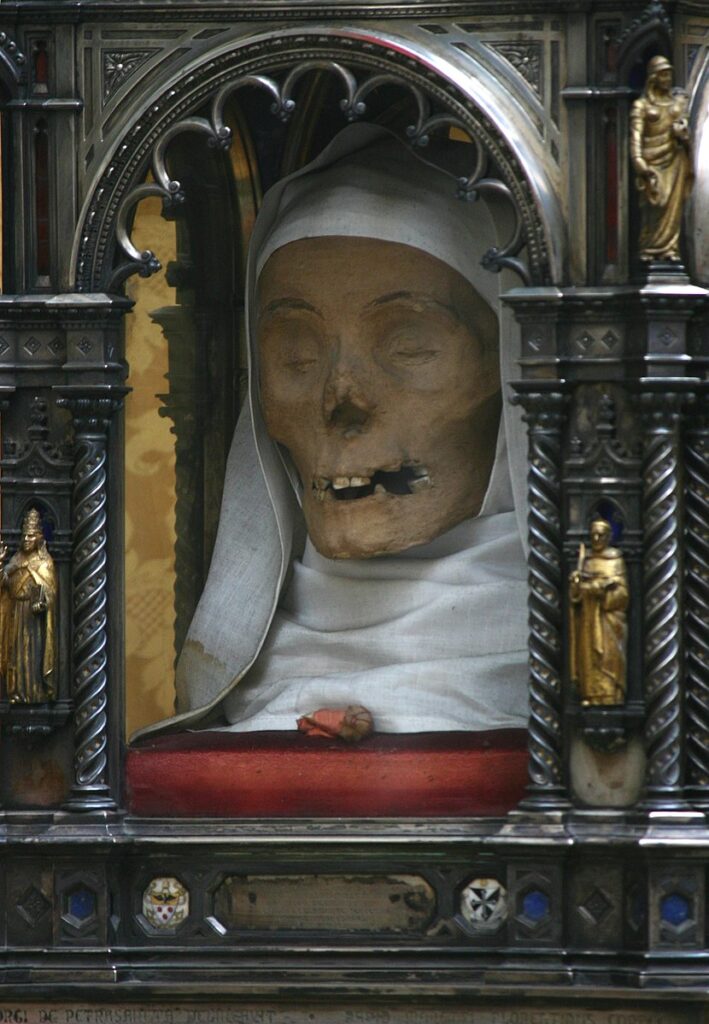Blood in (and as) Art
One of the first known expressions of human creativity, the Lascaux cave paintings, were created with blood, a material that has remained significant...
Kaena Daeppen 10 June 2024
Heads, shoulders, knees, and toes… Saintly toes? The variety of saintly relics really offers it all. I hope all of this is not too morbid for you. We do have a lot of articles about nice things, like flowers, cats, or puppies. And food. Speaking of which, I hope you’re not eating right now because we’re about to present to you the weirdest Christian relics, they are really weird!
All right, but what are relics really? Explaining it in the simplest way possible, they are artifacts holding special religious meanings. Any object that had to do with a person who is considered to be holy can become a relic – a piece of clothing, a book, or even a body part. Whether collected as a morbid souvenir or proof of martyrdom, relics have been “on the market” since ancient Greece and are found in almost every religion.
The earliest source of the existence of relics in Christianity is mentioned in the Old Testament when a man was brought back to life upon touching the prophet Elisha’s bones.
Once while some Israelites were burying a man, suddenly they saw a band of raiders; so they threw the man’s body into Elisha’s tomb. When the body touched Elisha’s bones, the man came to life and stood up on his feet.
2 Kings 13:20–21, Old Testament (The Bible), New International Version, 2011. Bible Hub.
Relics became trendy after the Second Council of Nicaea in 787 CE. The council decreed that veneration of relics isn’t paying respect to an inanimate object (thereby breaking one of the ten commandments that forbids idol worship). Rather it is a form of intercessory prayer: “Dear saint, here I am, in front of your detached limb. Could you say a good word to God for me?” Among the belief that the saints might intercede for us in heaven, there are also many recordings of cures and miracles attributed to relics. It is important to understand that relics represent the saint, therefore carrying his or her holiness. Following the Second Council, it became a norm for churches to contain relic altars. This was the beginning of the beautiful art of reliquaries, but also the crazy history of counterfeit black markets, some of which exist to this day.
Reliquaries, which you will also hopefully appreciate while reading this article, are decorated containers. Their function is not only to protect the sacred relic but also to display it at its greatest. The most interesting ones resemble the relics encased within them. One more tidbit of knowledge before I move on to my personal top 10 Christian Catholic relics: the Church divides relics into three classes.
The first and the second classes are considered “sacred classes”, while the third class contributes to a big portion of devotional articles. Set and ready? Here are some of the weirdest, morbid, or just most interesting Christian relics I could find!

Oliver Plunkett was an Irish Catholic Archbishop who died as the last victim of the Popish Plot in which he was falsely accused of treason against the Protestant King, Charles II. Oliver Plunkett was hung, drawn, and later quartered in 1681. The martyr’s head was supposedly brought to Rome, then hidden until 1921 in a nunnery of Drogheda (led by the martyr’s grand-niece). According to the story, the Saint’s decapitated head was thrown into the nearby fire and quickly rescued by Plunkett’s friends (friendship goals!). The fire left a slight scorch mark on the Saint’s left cheek.
Today, the relic of his head, together with some of his bones, reside in St. Peter’s Church in Drogheda, Ireland, which since 1995 is also the National Shrine to the Saint. Next to the relic itself, we can view the original authentication document, signed shortly after the saint’s martyrdom.

Ew, but it’s true. Saint Clare (1194-1253), living in Assisi among the famous St. Francis, was known for her long, beautiful hair. In the process of devoting her life fully to God, she wanted to get rid of her vanity. She cut her hair which was collected by an unknown follower. It is displayed in a reliquary in the basilica of her name, the Church of St. Clare’s in Assissi.
The basilica also presents a rock crystal flask reliquary containing the Saint’s fingernail clippings.

This story is just crazy. The relics of a very obscure and almost ungoogleable Roman martyr St. Datian can be found… on Manhattan Island. They were sent to the Church of the Most Holy Redeemer in 1892 by a wealthy Italian lady. According to the story, she could no longer afford to keep them in her private chapel so she donated them to the American church to avoid their seizure. There were some rumors in Manhattan that the waxed remains actually belong to a policeman, shot while defending the church from burglars. Apart from the infamous St. Datian, the chapel features over 150 second and third-class relics.

St. Januarius is the patron saint of Naples in Italy. An ampule reliquary containing his blood has been kept in the Duomo di Napoli, Naples Cathedral since the 14th century. The dried blood is famous for events of liquefaction, usually three times a year, on September 19th (St. Januarius’s Day), December 16th (the day of Naples archdiocese), and the memorial day of his relic reunification. There are reports for years that the blood liquefaction miracle did not occur, connected by observers to important world or church events.
On December 16, 2016, in the San Gennaro chapel in Naples, the “miracle of St. Januarius” did not happen. The blood contained in the vial remained solid, and this is seen as a “foreboding omen”. And it is true that there are many examples from recent history where the blood did not become liquid: in September 1939, a few weeks after the beginning of World War II; in September 1940, when the war hit Italy; in September 1943, date of the Nazi Occupation; in September 1973, before the outbreak of a cholera epidemic in Naples; and in September 1980, one month before the terrible earthquake that hit Irpinia, near Naples, killing nearly 3,000 people.
No “Miracle of St. Januarius” This Year, 2017, Society of St. Pius X.
Before you ask, knock on the wood, it did liquefy in 2020. We might still make it.
Professionally called “The Holy Prepuce” is a relic of, well, foreskin removed during Jesus’s circumcision. At least 18 churches in Europe have claimed to possess this delicate piece starting from the year 800 when Charles the Great gifted it to Pope Leo III, grateful for being crowned Emperor. Most of the sites are connected to the Feast of the Holy Circumcision (1st of January), popular in France and in Italy. The last known trace of the foreskin relic was in Calcata, Italy, from where it vanished in 1983. Just like with other “missing” relics, there are many rumors and they just get crazier and crazier.

One of the perks of studying art history is getting to visit places that you wouldn’t normally hear about or get easy access to. Well, I saw this guy during one of my university trips and I just fell in love.
This intact and preserved skeleton of St. Boniface of Tarsus can be found in the Church of St. Anthony of Padua in Warsaw. Look how cool he’s dressed! The crown on his head represents his martyrdom.

The Madonna Lactans (The Breastfeeding Madonna) won’t be a new trope for art history geeks. But did you know there are relics of Mother Mary’s Breast Milk too?

You can find it in the Chapel of the Milk Grotto in Bethlehem, in the Palestinian Territories. The Grotto was erected in 1872, but the sight was a center of Christian pilgrimage from the Byzantine era. According to Christian tradition, Bethlehem is where the Holy Family found refuge during the Massacre of the Innocents (also the place of Jesus’ birth). Virgin Mary’s milk supposedly dropped on the floor while she was breastfeeding Baby Jesus, changing its color to white. The Grotto is a popular shrine among couples struggling with infertility. The site sells limestone powder made from the grotto’s stone, meant to be dissolved in a drink and consumed as a “cure”. According to the Church, such powder can be classified as a third-class relic.


The Gothic cathedral in Amiens, a city in northern France, was built especially to house the relics of St. John the Baptist. The saint’s head was reportedly brought back from Constantinople in 1206 by crusader Wallon de Sarton.
St. John the Baptist is a major religious figure in Christianity, portrayed as a forerunner of Jesus Christ. According to the New Testament, St. John was beheaded by Herod Antipas around 28-36 CE as a punishment for criticizing the ruler’s recent divorce followed by an unlawful marriage. The beheading was requested by the ruler’s stepdaughter, Salome.
Art history often portrays the saint’s beheading, presenting his head on a silver platter. According to legend the original silver platter made it to Constantinople but had to be sold by the Crusaders in order to pay for his travel back. The relic was on display in the Amiens Cathedral until the French Revolution, which led to the confiscation of all Church property and treasure. The head was later returned to the cathedral in 1816.

Interestingly enough, we can also find St. John Baptist’s Head on display in the Basilica of Saint Sylvester the First in Rome, Italy. The remains of the saint were brought to Rome by Greek monks and were later inherited by nuns from the local monastery. Researchers claim that the head could have belonged to a local martyr, also called St. John, and was brought to the church from nearby catacombs. The shrine windows are decorated with stained glass, with one panel depicting St. John’s head on a silver platter.
Surprise, surprise! Also, the German museum in Munich takes pride in having St. John’s head. And not only that, the Munich Residenz museum holds a whole collection of relics, amassed by a royal Bavarian family who formerly resided in the building. The history of how the Holy Head made it to Munich is unclear.
The skull relic is wrapped in cloth and heavily decorated with gems.


Yup, St. John the Baptist is that popular. His last head can be found in Damascus, Syria. The Umayyad Mosque is one of the largest and oldest Mosques in the world. It was built after the conquest of Damascus by the Muslims in 634 on the site of a previous Christian basilica dedicated to St. John. The relic is currently located inside a shrine dedicated to the Saint, and just like the Munich head, it is not exposed.
This one is my favorite Severed Heads ever! St. Catherine’s relic is as beautiful as they make them, presenting an example of how embalming and post-mortuary preservation are arts themselves.

St. Catherine of Siena was a lay member of the Dominican Order, known for receiving stigmata (appearance of bodily wounds in locations corresponding to the crucifixion wounds of Jesus Christ) and having mystical visions as early as the age of seven. She died young, from natural causes, but due to the appearance of stigmata and pain, she is considered a martyr. She died outside of her convent, in Rome – but her head was stolen in order to bring it back to Siena.
According to the legend, when the head thieves with sacred intentions were stopped by Roman guards, St. Catherine’s remains turned into hundreds of rose petals. The thieves were obviously let free and to their surprise, the head re-materialized (as intact as a severed head can) in their bag. Her head currently rests in a beautiful reliquary in the Siena Church of San Dominico.

Unlike most of the Saints pictured in this article, Saint Anthony of Padua did not die as a martyr but of edema (swelling). His body was exhumed in 1263, more than thirty years after his death, and to everyone’s shock, Anthony’s tongue hadn’t decomposed. Why the tongue? Saint Anthony was known and praised around the world for his captivating sermons.
Both the tongue and the jaw bone are displayed in the Basilica of Saint Anthony in Padua. Fun fact: the Tongue did a full-on rockstar tour through New York City churches in 2013.

DailyArt Magazine needs your support. Every contribution, however big or small, is very valuable for our future. Thanks to it, we will be able to sustain and grow the Magazine. Thank you for your help!